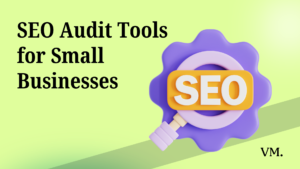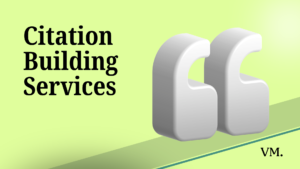Link-building remains a crucial aspect of improving your website’s visibility. However, the fear of link-building penalties from search engines due to improper link-building practices looms over many a webmaster. Are you worried about risking your site’s ranking? You’re not alone. Understanding how to build links effectively while avoiding penalties is essential for maintaining a healthy online presence. In this guide, you’ll discover proven strategies to enhance your link-building efforts safely and effectively.
What is Link Building?
Link building is the process of acquiring hyperlinks from other websites to your own. These links are vital for SEO because they signal to search engines that your content is valuable and credible. When done correctly, link building can significantly boost your site’s authority and search engine rankings. However, engaging in unethical or manipulative link-building tactics can lead to severe penalties, including drops in rankings or even de-indexing from search results.
Reasons You Need to Know How to Avoid Link-Building Penalties
Understanding how to navigate the complexities of link building is imperative for anyone looking to enhance their website’s authority without facing repercussions.
- Protect Your Rankings: Avoiding penalties ensures that your hard-earned rankings remain intact.
- Maintain Credibility: Ethical link building fosters trust with both users and search engines.
- Sustainable Growth: Proper practices lead to long-term success rather than short-lived gains.
By mastering the art of ethical link building, you can safeguard your website against penalties while still reaping the benefits of increased traffic and visibility.
Step-by-Step Instructions to Avoid Common Link-Building Penalties
To help you build links safely, follow this unique process designed for sustainable SEO success.
- Research and Understand Guidelines: Familiarize yourself with search engine guidelines regarding link building.
- Focus on Quality Over Quantity: Prioritize obtaining high-quality links from reputable sources.
- Diversify Your Link Profile: Aim for a diverse range of backlinks from various domains.
- Monitor Your Backlinks Regularly: Use tools to track your backlinks and identify any harmful links.
- Disavow Toxic Links: Take action against low-quality or spammy links pointing to your site.
By following these steps, you can create a robust link-building strategy that minimizes risks while maximizing rewards.
Step 1: Research and Understand Guidelines
Begin by thoroughly reviewing Google’s Webmaster Guidelines and other relevant resources. Understanding what constitutes good link-building practices will give a solid foundation for your strategy.
Step 2: Focus on Quality Over Quantity
Instead of chasing numerous low-quality links, aim for fewer but higher-quality backlinks. Links from authoritative sites carry more weight and are less likely to trigger penalties.
Step 3: Diversify Your Link Profile
A diverse backlink profile looks natural and is less likely to raise red flags with search engines. Include links from blogs, news sites, forums, and social media platforms.
Key Considerations For Successfully Avoiding Link-Building Penalties
While following the steps outlined above will significantly reduce your risk of penalties, there are additional insights to consider:
- Stay Updated on SEO Trends: The SEO landscape is constantly changing; staying informed will help you adapt your strategies accordingly.
- Engage in White-Hat Practices: Always adhere to ethical (white-hat) techniques that align with search engine guidelines.
- Build Relationships: Networking with other site owners can lead to organic backlink opportunities without risking penalties.
Taking it to the Next Level: How to Enhance Your Link-Building Strategy
Once you’ve established a solid foundation for avoiding penalties, consider enhancing your strategy by:
- Creating High-Value Content: Invest in producing exceptional content that naturally attracts backlinks.
- Utilizing Guest Blogging: Write guest posts for reputable sites in your niche, ensuring that they include relevant links back to your site.
- Leveraging Social Media: Promote your content on social media platforms to increase visibility and attract organic backlinks.
Alternatives to Traditional Link Building
If you’re looking for alternative methods beyond traditional link building, consider:
- Influencer Collaborations: Partner with influencers who can share your content with their audience.
- Content Marketing: Focus on creating shareable content such as infographics or videos that naturally earn backlinks.
- Online Communities: Engage in forums and communities relevant to your niche, providing value and earning links organically.
Understanding Link-Building Penalties Through Statistics
Link building is a vital component of search engine optimization (SEO), but it also comes with significant risks. As search engines like Google continuously refine their algorithms to promote high-quality content, the penalties for unethical link-building practices have become more severe. This chapter explores the statistics surrounding link-building penalties, shedding light on the impact these penalties can have on websites.
The Prevalence of Google Penalties
The landscape of link building is fraught with challenges, particularly due to the potential for penalties. Recent statistics reveal alarming trends regarding the consequences of link-building violations:
- 65% of Businesses Unaware: A staggering 65% of businesses that have received a Google penalty have never received a formal notification from Google, highlighting a significant communication gap in penalty enforcement.
- Average Traffic Reduction: Websites penalized for violating Google’s Webmaster Guidelines typically experience an average reduction of 50% in organic search traffic. This decline can severely impact their visibility and revenue.
- Recovery Rates: Approximately 70% of websites that receive a Google penalty do not recover their rankings within a year, indicating that recovery from such penalties is often a lengthy and challenging process.
Manual Actions Dominate: About 80% of websites that receive a penalty are due to manual actions, which are imposed by Google’s web spam team after reviewing the website’s practices. This statistic underscores the importance of adhering to ethical link-building strategies.
Types of Link Penalties
Understanding the types of penalties that can arise from poor link-building practices is crucial for webmasters. The two primary categories include:
- Manual Penalties: These are imposed by human reviewers and can result from various factors, including spam reports or active monitoring in competitive niches. Manual penalties require website owners to rectify issues and submit reconsideration requests for potential lifting.
- Algorithmic Penalties: Triggered automatically by Google’s algorithms, such as the Penguin algorithm, these penalties occur when patterns indicating manipulation are detected. They are often more common due to their real-time nature.
Link-Building Practices Leading to Penalties
Certain practices are particularly prone to attracting penalties:
- Buying Links: A survey revealed that 92% of SEOs suspect their competitors buy links, indicating widespread awareness of this risky practice. Buying backlinks may provide short-term ranking boosts but carries significant risks, including potential penalties.
- Low-Quality Backlinks: Websites with excessive low-quality or spammy backlinks are at high risk of receiving penalties. In fact, over 60% of businesses that receive a Google penalty go out of business within six months, illustrating the dire consequences of poor link management.
Monitoring and Recovery from Penalties
Identifying and addressing penalties swiftly is critical for maintaining a healthy online presence:
- Traffic Drops as Indicators: A sudden drop in website traffic often signals a potential penalty. For example, in 2013, Rap Genius faced a substantial traffic drop due to manipulative link-building practices, prompting immediate action from Google.
- Backlink Audits: Regularly conducting backlink audits using tools like Google Search Console or Ahrefs is essential for identifying unnatural links and mitigating risks associated with penalties.
- Disavowal Practices: Surprisingly, only 31% of SEOs utilize Google’s Disavow tool, despite its importance in managing harmful backlinks effectively This underutilization could lead to prolonged exposure to penalties.
The statistics surrounding link-building penalties paint a stark picture for webmasters navigating the complexities of SEO. With a significant percentage of businesses unaware of their penalized status and many failing to recover from such setbacks, it is crucial to prioritize ethical link-building practices. By understanding the types of penalties and monitoring backlink profiles diligently, website owners can safeguard their online presence against the detrimental effects of link-building violations.
How Can I Identify if my Website Has Received a Google Penalty?
To identify if your website has received a Google penalty, you can use several methods. Here’s a detailed overview based on the latest information:
1. Using Google Search Console
Google Search Console is an essential tool for monitoring your website’s health and performance. To check for manual penalties:
- Log in to your Google Search Console account.
- Navigate to the Manual Actions report under “Security & Manual Actions”.
- If you see a message stating “No issues detected,” your site is clear of manual penalties. However, if there is a penalty, Google will specify the issue and provide guidance on how to rectify it.
This tool allows you to see if any human reviewer from Google’s web spam team has flagged your site for violations such as unnatural links or thin content.
2. Using Google Analytics
For algorithmic penalties, which are automatic and not reported in Search Console, you can use Google Analytics:
- Log in to Google Analytics and go to Life Cycle > Acquisition > Traffic Acquisition.
- Filter the data by selecting “google / organic” to view only organic traffic.
- Compare traffic drops during specific dates with known Google algorithm update dates. A significant drop during these periods may indicate an algorithmic penalty.
3. Monitoring Traffic Patterns
A sudden and drastic drop in organic traffic is often the first noticeable sign of a potential penalty. If you observe:
- A sharp decline in traffic coincided with a Google update.
- Decreased keyword rankings or impressions.
- Your pages disappear from search results.
These could all be indicators of a penalty.
4. Using Google Penalty Checker Tools
Several tools can help identify potential penalties:
- SEMrush Sensor: This tool tracks daily fluctuations in Google’s SERPs and can indicate whether your site has been affected by an update.
- Panguin Tool: Specifically designed to correlate your traffic changes with Google updates, making it easier to spot potential penalties.
By utilizing these methods—Google Search Console for manual penalties, Google Analytics for algorithmic penalties, monitoring traffic patterns, and using specialized tools—you can effectively determine if your website has been penalized by Google. Regular monitoring and prompt action can help mitigate the impact of any penalties and maintain your site’s health and visibility online.
Wrapping Up and My Experience With Link Building
In my journey through the world of SEO, I’ve learned that avoiding common link-building penalties is not just about following rules—it’s about fostering genuine relationships and creating valuable content. By implementing ethical practices, you not only protect your website but also contribute positively to the online community. Embrace these strategies, and watch as your website flourishes without the looming threat of penalties hanging over it.
FAQ
A Google penalty is a negative impact on a website's ranking in search results, typically imposed due to violations of Google's Webmaster Guidelines. Penalties can be manual (imposed by human reviewers) or algorithmic (triggered automatically by Google's algorithms).
You can check for penalties using the following methods:
- Google Search Console: Check the Manual Actions report for any notifications of penalties.
- Google Analytics: Monitor traffic patterns for sudden drops that coincide with known Google updates.
- Traffic Monitoring: Look for significant declines in organic traffic or keyword rankings.
- Penalty Checker Tools: Use tools like SEMrush Sensor or the Penguin Tool to correlate traffic changes with Google updates.
Signs of a manual penalty include:
- Notifications in Google Search Console under the Manual Actions section.
- A sudden drop in organic search traffic.
- Specific pages are being removed from search results.
Algorithmic penalties may manifest as:
- A significant and sudden drop in organic traffic, especially during known Google algorithm update dates.
- A decline in keyword rankings across multiple pages.
- Pages disappear from search results without prior notification.
To recover from a Google penalty, follow these steps:
- Identify the Cause: Use Google Search Console and Analytics to determine what led to the penalty.
- Address Issues: Rectify any identified problems, such as removing unnatural backlinks or improving low-quality content.
- Submit a Reconsideration Request: For manual penalties, once issues are resolved, submit a reconsideration request through Google Search Console.
- Monitor Your Progress: Continue to track your website’s performance and make necessary adjustments.
The recovery time can vary significantly based on the severity of the penalty and how quickly you address the underlying issues. Some websites may see improvements within weeks, while others may take several months to recover fully.
Yes, you can prevent penalties by:
- Adhering to Google's Webmaster Guidelines.
- Engaging in ethical (white-hat) link-building practices.
- Regularly audit your backlink profile for low-quality links.
- Creating high-quality, relevant content that provides value to users.



